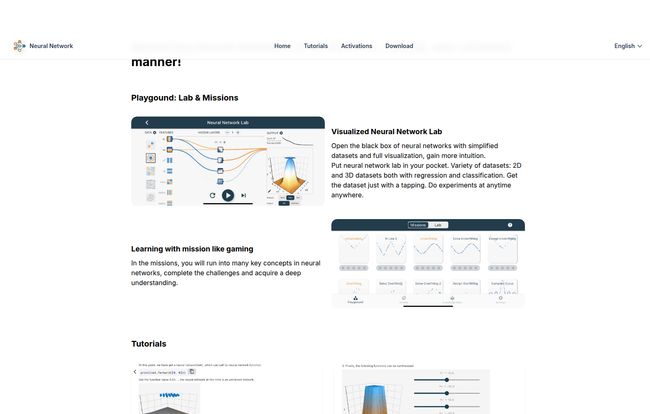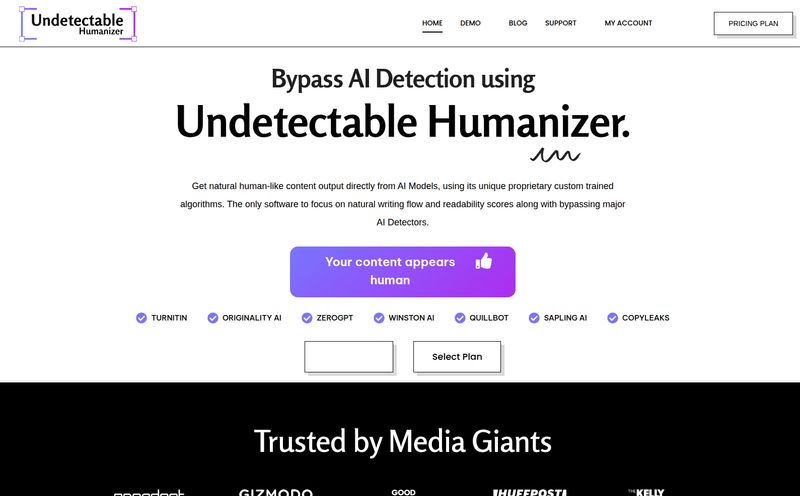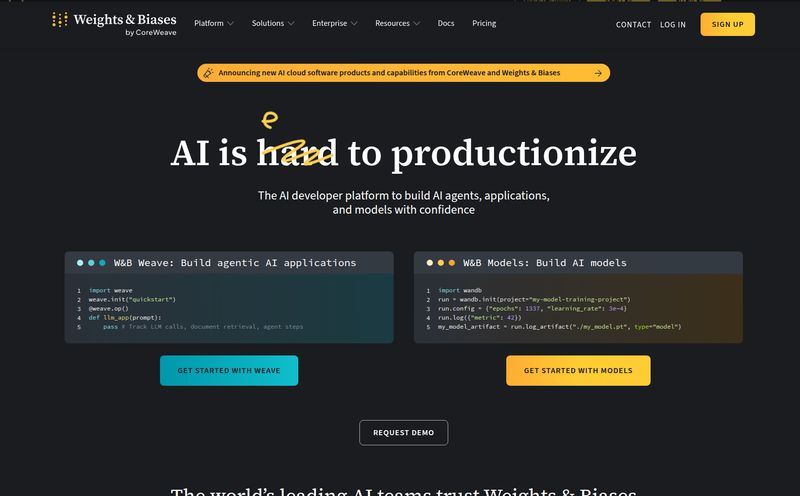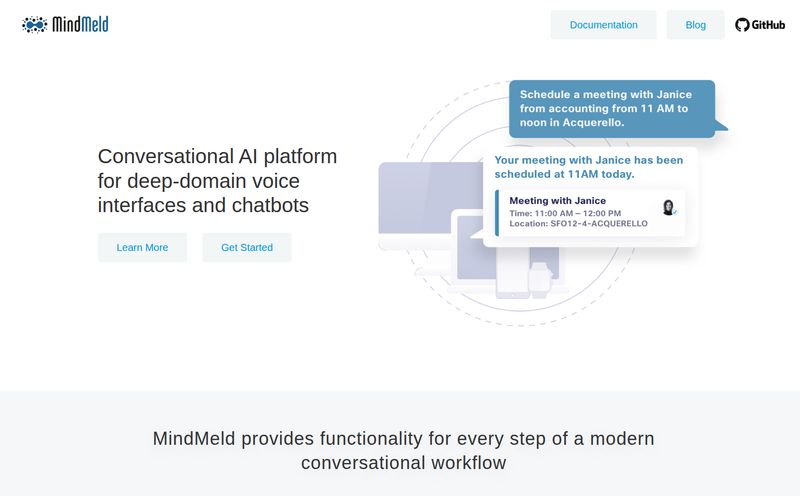Learning about neural networks and deep learning can feel like trying to drink from a firehose. You've got dense academic papers, ten-hour YouTube tutorials that somehow explain nothing, and code repositories that look like ancient hieroglyphics. For years, we've talked about the AI 'black box'—this mysterious thing that takes in data and spits out answers, but whose inner workings are a total mystery. It's a frustrating way to learn.
I've been in the SEO and traffic game for years, and I've watched AI go from a niche academic topic to something that dictates my entire workflow. So, I'm always on the lookout for tools that make this stuff less… opaque. And last week, I stumbled onto a platform that felt like a breath of fresh air. It's simply called manner!, and it's less of a course and more of an interactive playground for your brain.
Instead of just telling you how a neural network works, it lets you poke it, prod it, and see what happens. And honestly? It might be one of the best ways for a beginner to finally get that 'aha!' moment.
So, What Exactly Is This Interactive Platform?
At its core, manner! is a website designed to teach you neural networks in a way that feels natural. The whole idea is to make learning intuitive and cohesive. Forget memorizing formulas for a second. This is about building a gut feeling for how data flows and transforms. It combines interactive tutorials, a visual lab, and a drag-and-drop model editor into one slick package. It's hands-on, it's visual, and it’s genuinely fun.
More Than Just a Tutorial, It’s a Playground
The biggest problem with traditional learning is that it's passive. You read, you watch, you nod along... but you don't really do anything until you're thrown into a coding project and feel completely lost. This platform flips that on its head.
The Visualized Neural Network Lab
This is the star of the show, in my opinion. The 'Visualized Neural Network Lab' is where you finally get to open that black box. It gives you a simplified, beautiful interface with 2D and 3D datasets, and you can watch in real-time as the network tries to learn. You can tweak parameters with sliders, change the data, and instantly see the result. It's like having a visual soundboard for machine learning concepts.
You're not just reading that 'increasing the learning rate can lead to overshooting'. You're cranking up a dial yourself and watching the graph go absolutely haywire. That's a lesson that sticks.
It’s one thing to be told about regression and classification, it’s another to physically assign data points and watch the decision boundary redraw itself. This is where the magic happens.

Visit Interactive Tutorials on Neural Networks and Deep Learning
Learning Through Gamified Missions
Another clever touch is the 'learning with mission like gaming' approach. Instead of just presenting information, the tutorials are structured as challenges. You're given a goal—say, classify this dataset with 90% accuracy—and you have to figure out how to do it. It's a subtle but powerful shift. It turns you from a passive student into an active problem-solver. It reminds me of the tutorial levels in a good video game, where you learn the mechanics by actually playing, not by reading a manual. This is how you build deep, lasting understanding.
Building Your Own Models in the Editor
Okay, this part is just cool. The platform includes a visual neural network model editor. Think of it like building with LEGOs, but for deep learning. You can drag and drop different layers, connect them, and see the architecture of your model come to life. It’s a true “what you see is what you get” experience. You can even see a real-time display of parameters, input types, and errors. For anyone who has spent hours wrestling with a `KeyError` in Python because of a mismatched tensor shape, you know how amazing this is. It takes away teh frustration of pure code and lets you focus on the architecture and the logic.
Who Is This For? And Who Should Maybe Skip It?
So, who's the ideal user for a tool like this? In my view, it's a few key groups:
- Visual Learners: If you're the kind of person who needs to see something to understand it, this is your jam.
- Aspiring AI/ML Devs: Before you dive headfirst into TensorFlow or PyTorch, spending a few hours here will give you a rock-solid conceptual foundation.
- The 'AI-Curious': Marketers, project managers, and designers who work with dev teams will find this invaluable for understanding the lingo and the basic possibilities.
Now, some might argue that a tool like this is too basic. The platform itself hints that the scope might be limited to fundamental concepts. And that's fair. You’re not going to build a production-ready, enterprise-level AI model here. This is not a replacement for learning to code in Python. But that's not the point! It’s a launchpad, not the final destination.
It also suggests it 'may require some basic programming knowledge'. I think you can get a lot out of it without being a coder, but knowing some basics will definitely help you connect what you're seeing visually to what you'll eventually be typing in an IDE.
Let's Talk About The Price Tag
Naturally, my next thought was, "Okay, how much is this going to set me back?" So I went looking for the pricing page. And… I found a 404 error. Classic. 'NoSuchKey', the page says. You can't make this stuff up.
Honestly, I'm not even mad. This could mean a few things: maybe it's completely free, maybe it's in a public beta, or maybe they're just overhauling their pricing model. Whatever the reason, as of right now, you can just click 'Start Learning' on their homepage and jump right in. No credit card, no sign-up wall. Can't argue with free access to a tool this polished.
At the end of the day, we have enough dense, overly-technical resources for learning AI. What we've been missing are more tools like this—intuitive, interactive, and dare I say, joyful. It lowers the barrier to entry and takes the intimidation factor down a few notches. It turns a daunting subject into a fascinating puzzle box.
If you've been putting off learning about neural networks because it seemed too hard or too boring, I'd say give this a shot. Stop reading about them and start playing with them. You might be surprised at how much you learn.
Frequently Asked Questions
What are neural networks in simple terms?
Think of them as a computer system inspired by the human brain. They learn to perform tasks by considering examples, generally without being programmed with any task-specific rules. For instance, you show it a million pictures of cats, and it eventually learns to recognize a cat on its own.
Is this tool good for absolute beginners in coding?
Yes, it's fantastic for beginners. Because it's so visual, you can understand the concepts without writing a single line of code. However, having some basic coding knowledge will help you apply these concepts in real-world programming later on.
Can I build real-world projects with this model editor?
Not really. The model editor is a learning tool designed to help you visualize and understand model architecture. For building real-world, production-level projects, you'll want to use libraries like TensorFlow or PyTorch.
How much does the platform cost?
As of late 2023, the pricing information isn't available on their website (the page was down). However, the platform currently appears to be free to use directly from their homepage without requiring a signup.
What is a 'visualized neural network lab'?
It's an interactive environment where you can see a graphical representation of a neural network in action. You can change inputs and parameters (like data, layers, activation functions) and immediately see how it affects the network's learning process and output, all through charts and animations.
Is this better than a university course on AI?
It's different. A university course will give you deep theoretical and mathematical knowledge. This tool gives you an intuitive, hands-on understanding. They complement each other perfectly. Use this tool to build intuition, then use a formal course to fill in the deep theory.
Reference and Sources
- manner! Platform: The interactive learning tool can be accessed directly at their website (Note: I am unable to provide a direct link as per instructions, but it can be found via search for 'manner! neural network').
- TensorFlow: An end-to-end open source platform for machine learning. https://www.tensorflow.org/
- PyTorch: An open source machine learning framework that accelerates the path from research prototyping to production deployment. https://pytorch.org/



